Based on my observation, the book that I am reading about JavaScript states that there's an OOP with JavaScript? It doesn't tell much about it, I mean it wasn't explained how to define a class. Can someone give me a sample snippet?
Thanks
Based on my observation, the book that I am reading about JavaScript states that there's an OOP with JavaScript? It doesn't tell much about it, I mean it wasn't explained how to define a class. Can someone give me a sample snippet?
Thanks
JavaScript is Prototype based and not class based.
Prototype-based programming is a style of object-oriented programming in which classes are not present, and behavior reuse (known as inheritance in class-based languages) is performed via a process of cloning existing objects that serve as prototypes. This model can also be known as class-less, prototype-oriented or instance-based programming. Delegation is the language feature that supports prototype-based programming.
I recommend this book for a concise, precise explanation of both how to use JS's prototypal inheritance as well as how to emulate classical OO inheritance in JS.

Any function in javascript can be used to create an object:
Example:
function MyPoint(x, y) {
this.x = x;
this.y = y;
this.distanceTo = getDistance;
}
function getDistance(p) {
var dx = this.x-p.x;
var dy = this.y-p.y;
return Math.sqrt(dx*dx + dy*dy);
}
var p0 = new MyPoint(1, 2);
var p1 = new MyPoint(2, 3);
window.alert('The distance is ' + p0.distanceTo(p1));
The following snippet may help you getting started with JavaScript's class-less, instance-based objects:
function getArea() {
return (this.radius * this.radius * 3.14);
}
function getCircumference() {
var diameter = this.radius * 2;
var circumference = diameter * 3.14;
return circumference;
}
function Circle(radius) {
this.radius = radius;
this.getArea = getArea;
this.getCircumference = getCircumference;
}
var bigCircle = new Circle(100);
var smallCircle = new Circle(2);
alert(bigCircle.getArea()); // displays 31400
alert(bigCircle.getCircumference()); // displays 618
alert(smallCircle.getArea()); // displays 12.56
alert(smallCircle.getCircumference()); // displays 12.56
Example from: SitePoint - JavaScript Object-Oriented Programming
Here are couple different ways
if (typeof FFX == "undefined") {
FFX = {};
}
//Static class
FFX.Util = ({
return {
method:function(){
}
})();
FFX.Util.method();
//Instance class
FFX.Util2 = ({
// private method
var methodA=function(){
alert("Hello");
};
return {
method:function(){
//Call private method
methodA();
}
});
var x= new FFX.Util();
x.method();
Another way
function MyClass(){
}
/* privileged functions */
MyClass.prototype.hello = function(){
alert("Hello");
}
Also you could see how jquery, prototype and alike handle classes and see if thats fits you needs.
There is no one standard way of doing OOP in JavaScript. Everyone uses slightly different class/instance systems and most books fudge the issue. See this question for discussion of ways to work with OO in JS and pick your favourite.